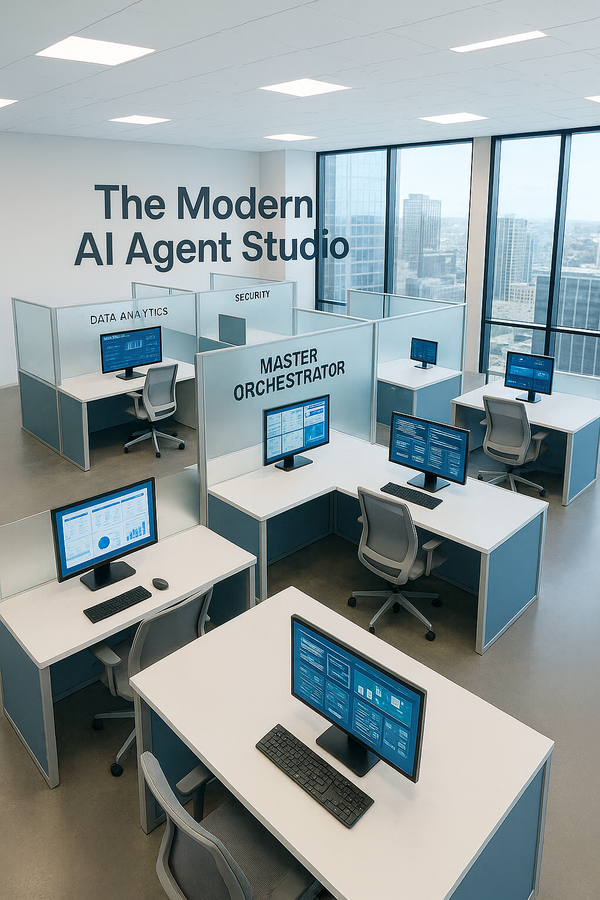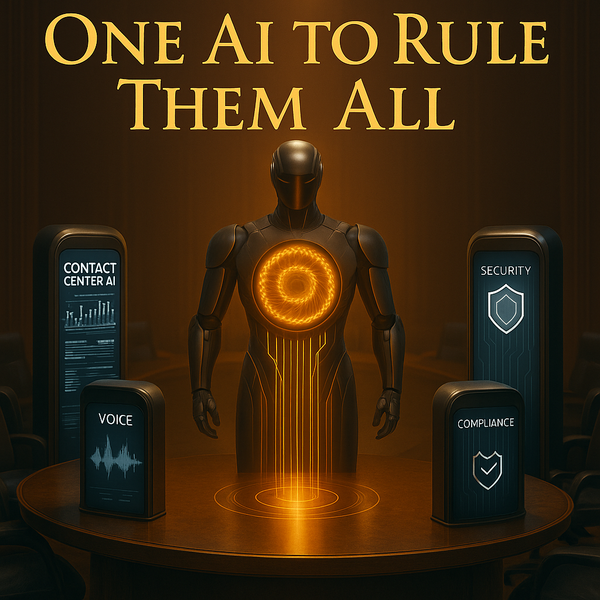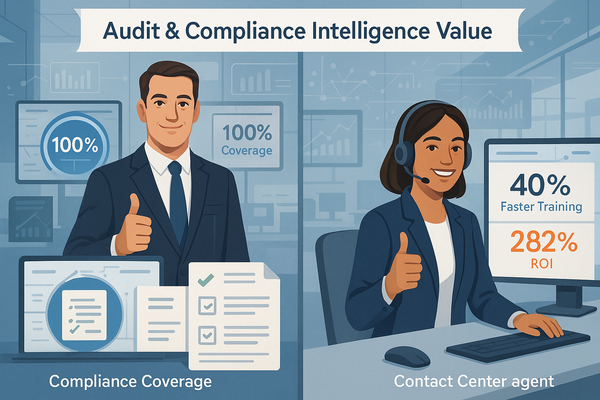Reality Check Wednesday: When AI Security Costs More Than the AI - The $100M External Monitoring Problem

Bold Enterprise Reality Statement
Black Hat 2025 revealed a stunning truth: enterprises are now spending more on watching their AI agents than they spent on the AI agents themselves. With vendors like Noma Security raising $100 million just to monitor AI systems externally, the enterprise AI security tax has become more expensive than the AI it's supposed to protect. The current architecture treats security as an expensive afterthought rather than a built-in capability.
By the Enterprise Numbers: The AI Security Cost Reality
Current Enterprise AI Security Spending (Black Hat 2025 Data):
- AI Agent Implementation: $500K-2M annually for enterprise deployments
- External AI Security Platform: $300K-1M+ annually for comprehensive monitoring
- Total Enterprise AI Cost: $800K-3M+ (security represents 40-60% of total AI investment)
- Vendor Funding Reality: $100M+ raised by single AI security companies (Noma Security)
What External AI Security Platforms Actually Do:
These platforms provide "discovery, monitoring, and governance of autonomous agents deployed across enterprise environments" through external observation and control systems that attempt to:
- Monitor all AI agent interactions from outside the core systems
- Track agent behavior and link with human users to trace access
- Detect risky behavior and automatically contain threats
- Provide inventory of all AI assets across enterprise environments
The Cost Structure Problem:
External monitoring requires extensive integration work, complex API connections, and sophisticated inference engines to understand what AI agents are doing from the outside - all adding layers of cost and complexity.
Enterprise Success Story Deep Dive: The External Security Reality
The Black Hat 2025 Landscape: Multiple vendors announced AI security platforms, each addressing the same fundamental problem: enterprises deploying AI agents without built-in governance capabilities.
7AI's Agentic Security Platform: Announced "revolutionary innovations that make 7AI the first platform to handle the entire security workflow through AI agents - from consuming zero-day alerts to novel threat investigation"
Key Capabilities Demonstrated:
- Dynamic Reasoning: Enables agents to investigate completely novel alerts
- Enterprise Insights: Eliminates false positives through contextual understanding
- Autonomous Remediation: Handles complete security workflows without human intervention
Why External Security Wins (Currently):
- Vendor Neutrality: Works across multiple AI platforms and vendors
- Specialized Expertise: Dedicated security focus rather than general AI capabilities
- Rapid Deployment: Can be added to existing AI implementations without rebuilding core systems
- Compliance Documentation: Provides audit trails and regulatory compliance reporting
Platform Analysis: The External Security Vendor Landscape
Tier 1 Enterprise Security Platforms (Full-Stack Solutions):
CrowdStrike Falcon Shield: Now integrated with OpenAI ChatGPT Enterprise Compliance API
- Strengths: Deep enterprise security expertise, comprehensive SaaS app coverage (175+ apps)
- Investment: Part of broader CrowdStrike platform, enterprise pricing tiers
- Enterprise Focus: Maps agents to human creators, governs privileges, contains threats automatically
Cyera AI Guardian: Secures any type of AI from public tools to proprietary platforms
- Strengths: AI-SPM for asset inventory, AI Runtime Protection for real-time monitoring
- Investment: Comprehensive platform requiring dedicated security team training
- Enterprise Focus: Can analyze millions of enterprise records and create security reports
Noma Security AI Agent Platform: Purpose-built for securing AI agents at scale
- Strengths: $100M funding specifically for AI agent security, enterprise-focused development
- Investment: Premium enterprise pricing reflecting specialized AI security focus
- Enterprise Focus: Discover, monitor, and govern autonomous agents across enterprise environments
The Bottom Line:
Current external AI security platforms deliver strong ROI when measured against risk avoidance, but the high cost (40-60% of AI investment) signals market demand for more efficient architectural approaches.
Hypothetical Alternative: The Embedded Master Agent Approach
Educational Concept: Built-In Governance Architecture
Rather than external monitoring, consider a hypothetical approach where security and governance are embedded directly into multi-agent systems:
Theoretical Master Agent Functions:
- Internal Oversight: Built into the multi-agent architecture from day one
- Real-Time Governance: Monitors agent interactions with native access to decision-making processes
- Cost Integration: Part of the core platform cost rather than separate security layer
- Seamless Coordination: Orchestrates both productivity and security agents within single system
Hypothetical Architecture Benefits:
- Lower Total Cost: Eliminates need for expensive external monitoring platforms
- Better Visibility: Native access to agent reasoning vs. external observation
- Faster Response: Real-time governance decisions rather than reactive security measures
- Unified Management: Single platform for both AI capabilities and AI security
Educational Example Scenario: A customer calls with a billing dispute. In a hypothetical embedded governance system:
- Billing Agent processes the dispute with built-in compliance checking
- Account Agent updates records with automatic audit trail generation
- Master Agent monitors the entire interaction with native visibility into each agent's decision-making
- Security decisions happen in real-time as part of the workflow, not as external monitoring
Important Note: This embedded approach remains theoretical, as current market solutions focus on external monitoring due to the complexity of building governance directly into AI agent architectures.
The Strategic Reality: External vs. Embedded Economics
Why External Security Dominates Today:
- Faster Market Entry: Easier to build external monitoring than redesign AI architectures
- Vendor Independence: Works across multiple AI platforms without requiring rebuilding
- Specialized Expertise: Security vendors can focus on governance without building AI capabilities
- Regulatory Compliance: External monitoring provides audit trails that regulators understand
The Economic Trade-Off:
- External Approach: Higher total cost but faster implementation and vendor flexibility
- Hypothetical Embedded Approach: Potentially lower total cost but requires architectural redesign
ROI Reality Check: The AI Security Tax
Current Enterprise AI Security ROI Calculation:
Traditional Implementation:
- AI Platform Investment: $1.5M annually
- External Security Platform: $600K annually
- Integration and Management: $200K annually
- Total Annual Cost: $2.3M
Risk Mitigation Value:
- Regulatory Compliance: Avoid $5M-50M potential fines
- Data Breach Prevention: $4.5M average enterprise breach cost avoided
- Operational Continuity: 99.9% uptime vs. security incidents causing downtime
Net ROI Calculation:
- Annual Investment: $2.3M
- Risk Avoidance Value: $10M-60M potential
- ROI Range: 335-2,500% when measured against avoided security incidents
The Bottom Line: Current external AI security platforms deliver strong ROI when measured against risk avoidance, but the high cost (40-60% of AI investment) signals market demand for more efficient architectural approaches.
What This Means for Your AI Security Strategy
Immediate Strategic Decisions:
For Current AI Deployments: External security platforms are necessary despite high costs
- Budget 40-60% of AI investment for comprehensive security coverage
- Focus on platforms that integrate with your existing AI vendors
- Prioritize solutions with strong regulatory compliance documentation
For Future AI Architecture: Consider security-first design approaches
- Evaluate vendors building governance into AI platforms rather than external monitoring
- Plan for potential embedded security solutions as market matures
- Design AI workflows with built-in audit trails and compliance capabilities
Strategic Framework:
- Assess Current Risk: Quantify potential security incidents and regulatory exposure
- Calculate Security ROI: External platforms deliver strong returns when measured against avoided risks
- Plan Architecture Evolution: Watch for embedded governance solutions that could reduce total cost
- Maintain Vendor Neutrality: Avoid lock-in to single security or AI platform vendors
The Market Evolution: External AI security platforms represent current best practice, but the high cost (40-60% of AI investment) suggests the market will eventually evolve toward more efficient embedded governance approaches. Organizations should implement external security now while planning for architectural evolution as embedded solutions mature.
Sources and References:
[1] Noma Security AI Agent Security solution launch, Black Hat USA 2025 Summary Part 3, SecurityWeek, August 2025
[2] 7AI Showcases Industry's First Dynamic Agentic Security Platform, 7AI Blog, July 30, 2025
[3] Black Hat 2025: How Agentic AI Is Finally Delivering Real Value, VentureBeat, August 2025
[4] Black Hat USA 2025 Summary of Vendor Announcements Part 1, SecurityWeek, August 2025
[5] CrowdStrike Falcon Shield OpenAI Integration, Black Hat 2025 Recap, CSO Online, August 2025
[6] Cyera AI Guardian Launch, Black Hat USA 2025 Summary Part 1, SecurityWeek, August 2025
[7] AI Agent Security at Black Hat USA 2025, Zenity, August 2025
[8] CalypsoAI Agentic AI Drives Cyber Threats at Black Hat 2025, TechIntelPro, August 2025



